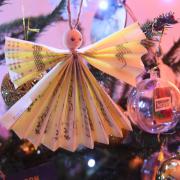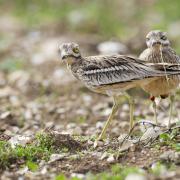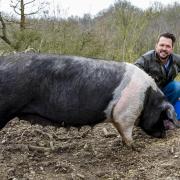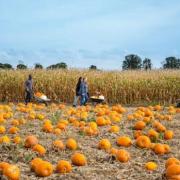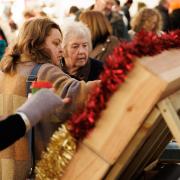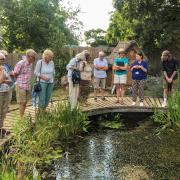Nature is getting ready for arguably its biggest show of the year – autumn!
The stark bright sunlight of summer gives way to a warm amber glow as the summer steps aside to make way for this glorious new season.
Nature has many highlights at this time of year. Here are my five favourite autumn treats...

1. Autumn colour
If you were to stop someone in the street and ask them the first thing they think of about autumn, it’s likely most they would say the changing colour of leaves. A dazzling array of reds, oranges, yellows and browns create a memorable visual feast. Days shortening and weather cooling means leaves receive less sunlight, slowing down the production of chlorophyll, which gives leaves their green colour. This allows underlying pigment to come through, resulting in the fiery show of leaf colours we associate with this season. So next time you are out and about this September into October, make sure you enjoy this free natural spectacle for the short time that it lasts.

2. Hedgerows' harvest
Our hedgerows don’t only provide boundary markers for our gardens or fields, they also provide an abundance of food for wildlife during autumn. A vital lifeline for many species to help them feed up before the winter arrives, sloes, hawthorn berries and blackberries in hedgerows provide welcome fuel for birds such as redwing and fieldfare after their autumn migration here from Scandinavia. Many of our mammals will also feast on the berries including hedgehogs, squirrels and foxes. Hazelnuts provide food for birds such as woodpecker and nuthatch which cram nuts into tree crevices to hammer open with their beaks, and mammals including squirrels and wood mice will nibble on the nuts too. Now is a great time to plant a new hedgerow for wildlife, or you can even plant a ‘hedge wedge’ if short on space. Find out more: https://brnw.ch/growahedge

3. The Ivy has it
Possibly one of the most underrated plants found in our gardens or the countryside is ivy. This amazing climbing plant is one of wildlife’s best friends. In the spring it provides a place for many birds, as well as other species, to roost, feed or raise their young. But from September to November, ivy provides berries for birds to eat, and it flowers. Yes, ivy flowers! The flowers aren’t obvious, in fact these tiny pin-like flowers are very understated, but they provide vital nectar for bees, hoverflies, wasps and butterflies. It will literally be buzzing with life. This nectar source arrives at a time of year when there are very few other nectar food sources about. Keep an eye out for the ivy mining bee who can be seen on ivy flowers between September to November. First recorded here in 2001, ivy is the main source of pollen for this bee and it cleverly times its emergence to coincide with the ivy flowering. The bees look very similar to honeybees but if you spot a bee on ivy in the autumn in Suffolk, it is highly likely to be an ivy mining bee. So, what are you waiting for? Plant an ivy today!

4. Red Deer drama
From late September, mature red deer stags seek to attract hinds (females) to follow them, forming groups called harems. The stags roar loudly and repeatedly to warn off male rivals and attract females. Other males seek to claim their territory and compete for the attention of the females, resulting in lots of roaring, posturing and locking antlers, as they battle to see which males get to mate this year. For those that successfully mate, their calves will be born in May or June the following year. One place this spectacular display happens is RSPB Minsmere in Suffolk where visitors can be driven to the site of the red deer herd by a knowledgeable nature guide, getting a direct view of the red deer that will be competing to mate between September to November. To find out more or book a ticket: https://brnw.ch/SeeRedDeer

5. Jays know the way
We may think of squirrels burying food in the ground for their autumn and winter stash, but have you ever thought about jays? The autumn is prime acorn hunting season as oak trees drop their tasty acorns. Jays are usually shy and secretive members of the crow family, but during the autumn you can see them prancing merrily along looking for acorns to remove, then bury elsewhere, providing them with food during harsh winter months. Jays will sometimes forget where they stash their acorns. These forgotten acorns are then given the chance to grow into towering oak trees – proving just how clever nature is when it works together.
Make your nature connection this autumn
Instead of hibernating at home, why not jump into this beautiful season and visit an RSPB nature reserve in Suffolk or beyond? Explore our nature reserves: https://brnw.ch/reserves
Staying seasonal
Follow nature’s journey through the seasons at Natures Calendar: https://brnw.ch/NaturesCalendar




